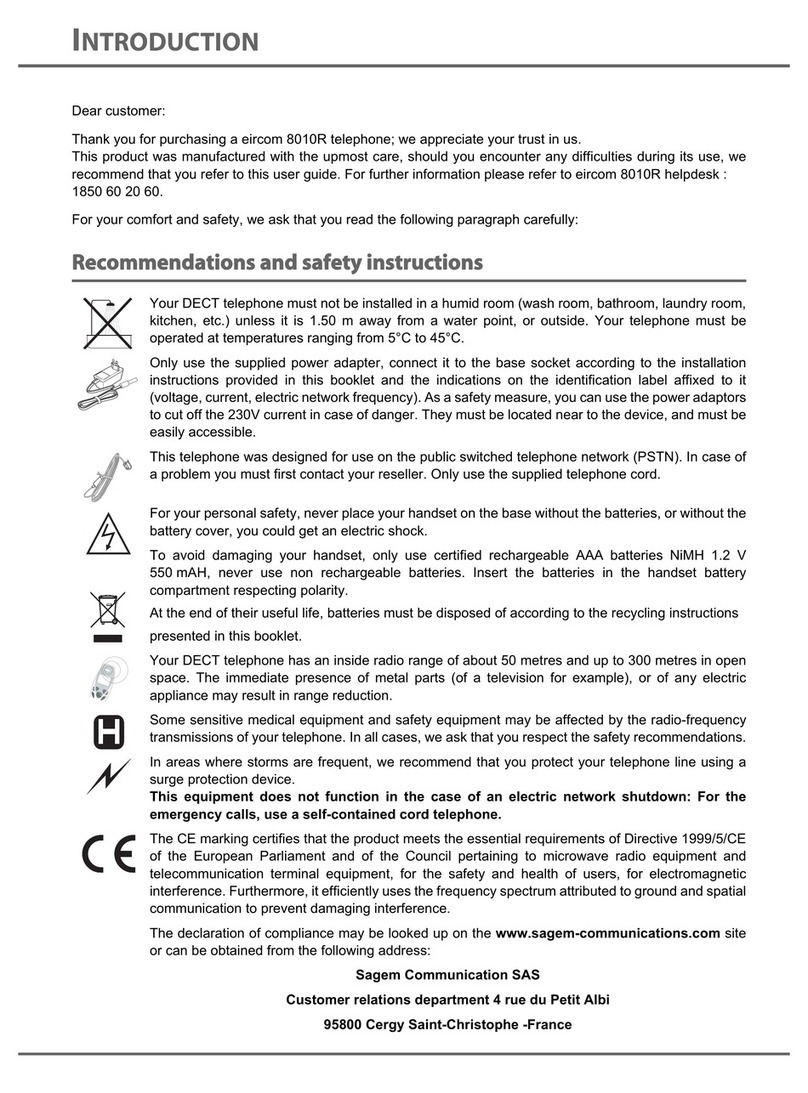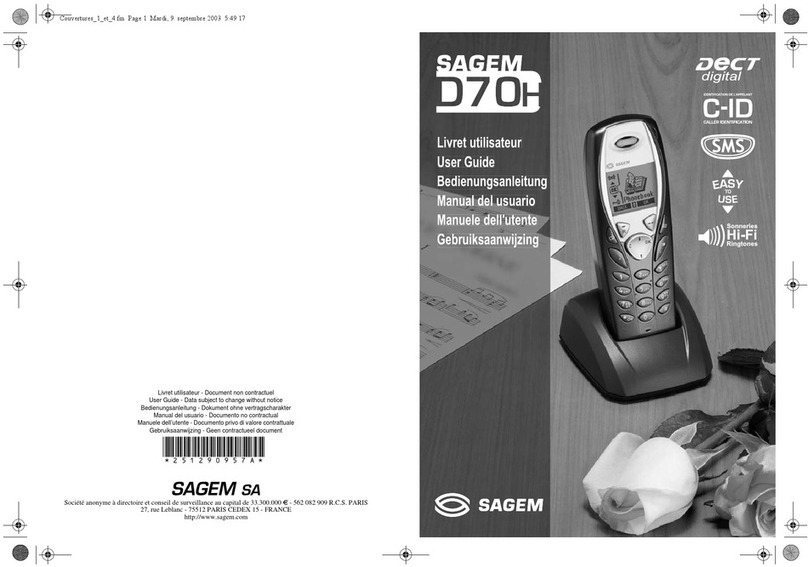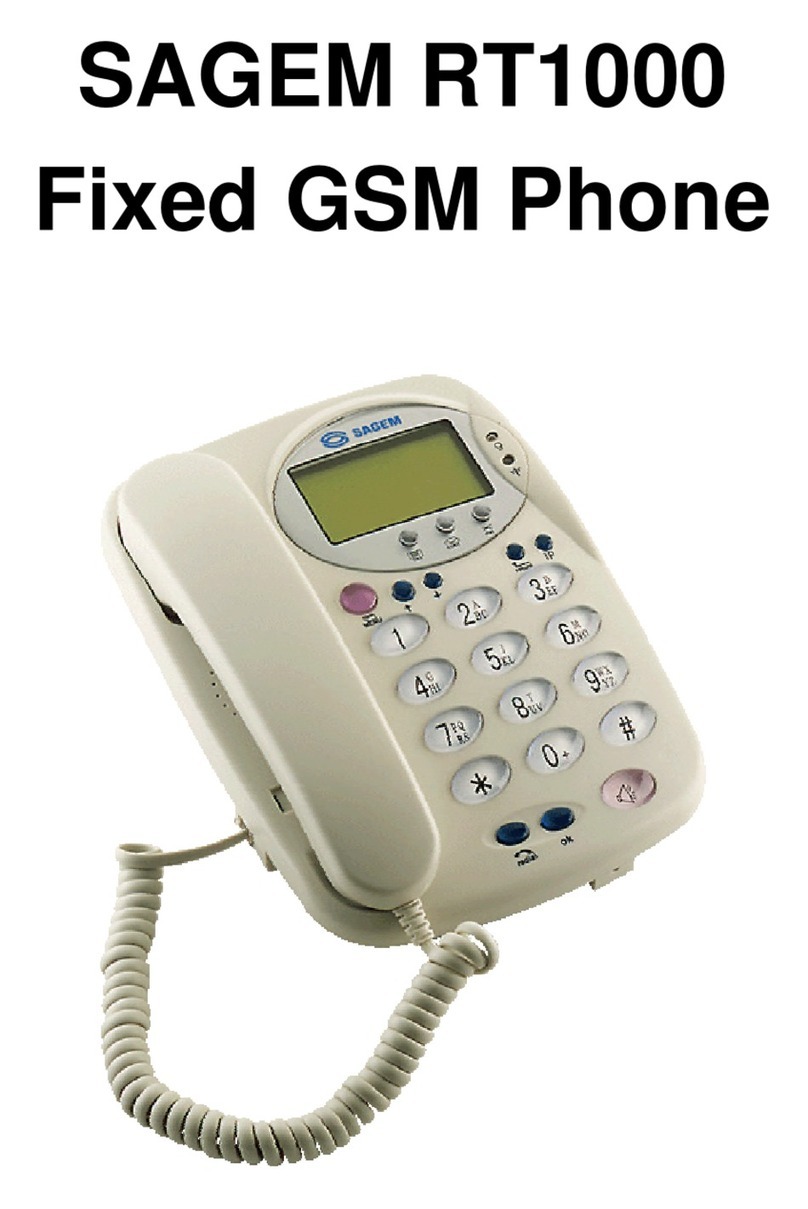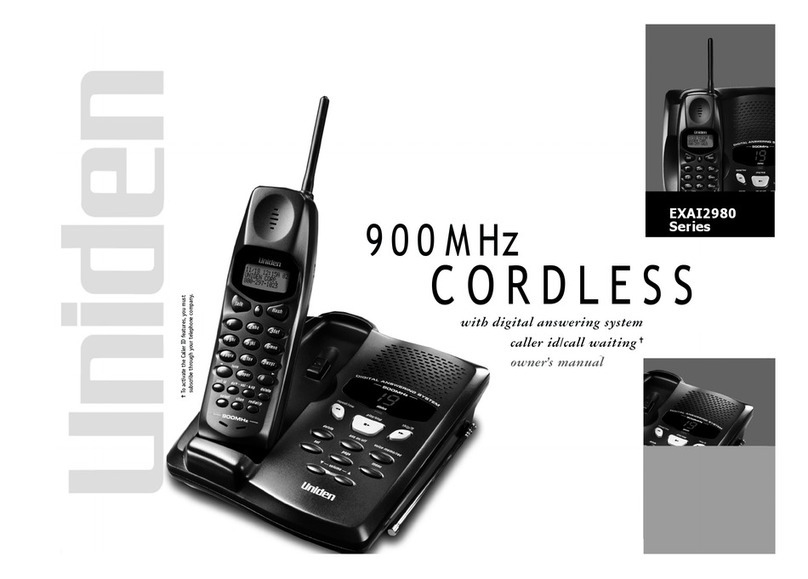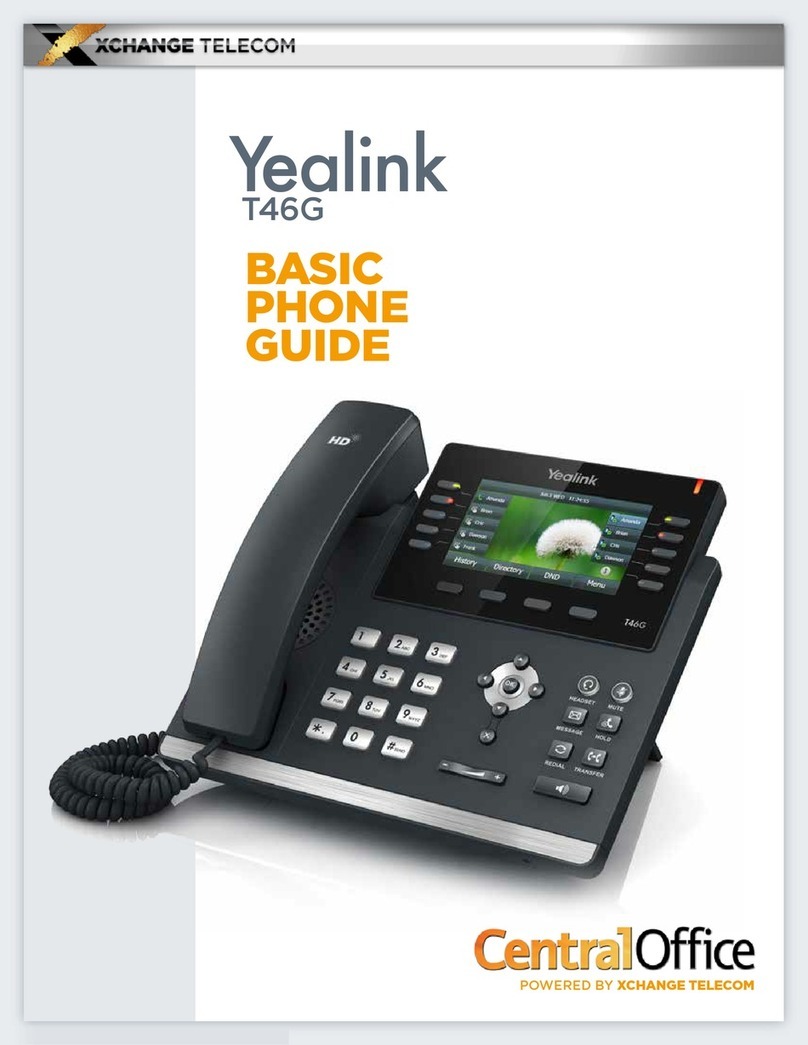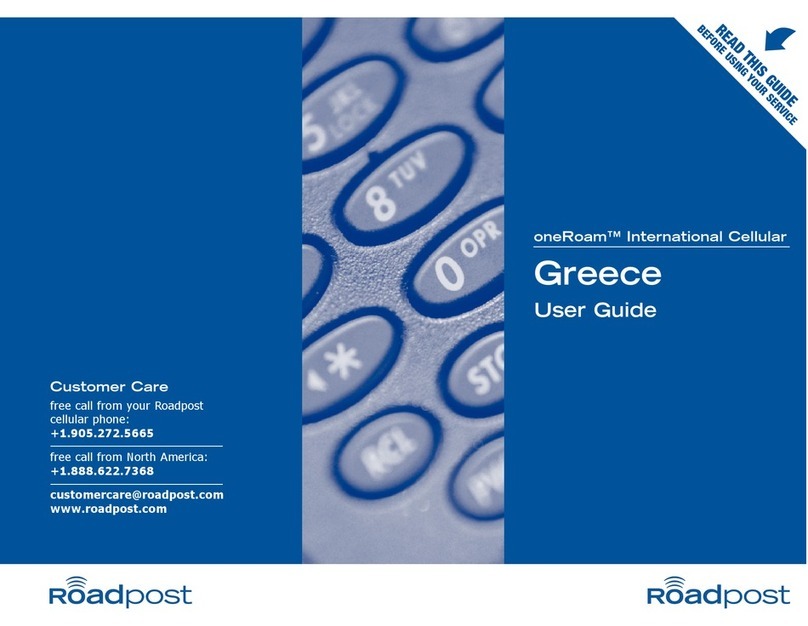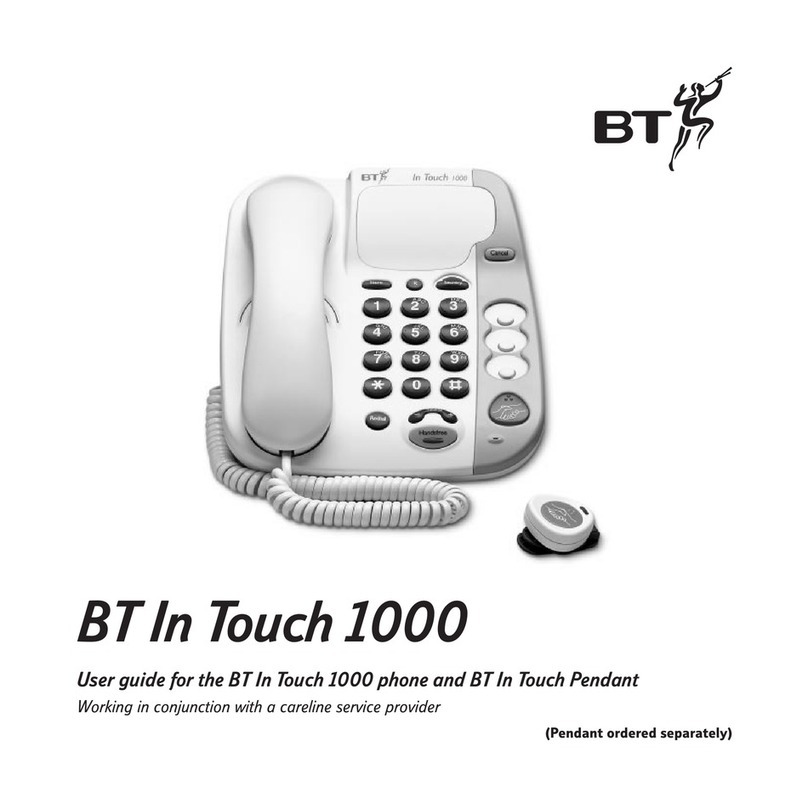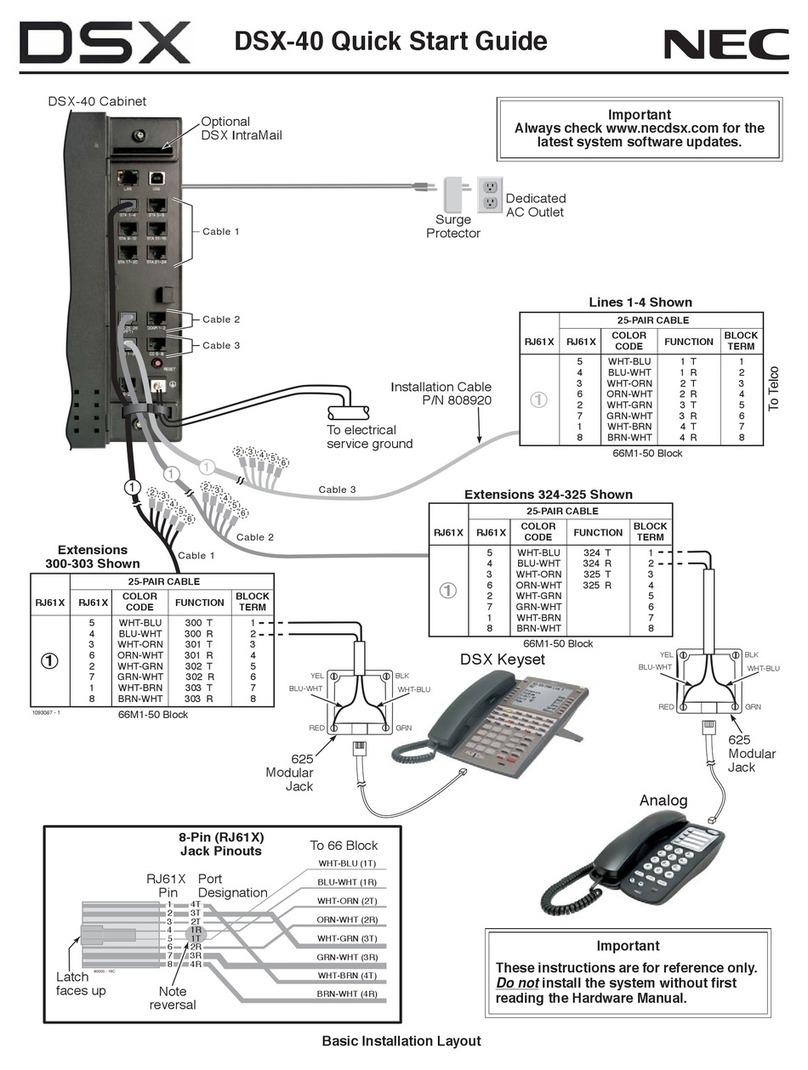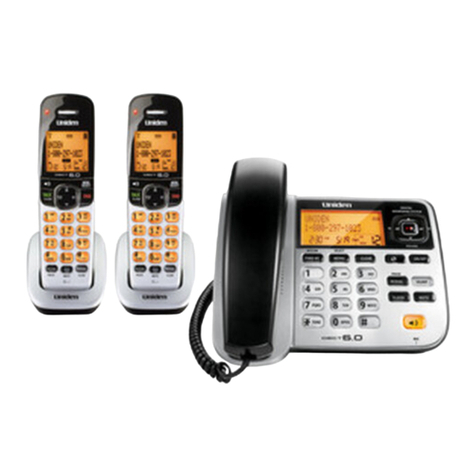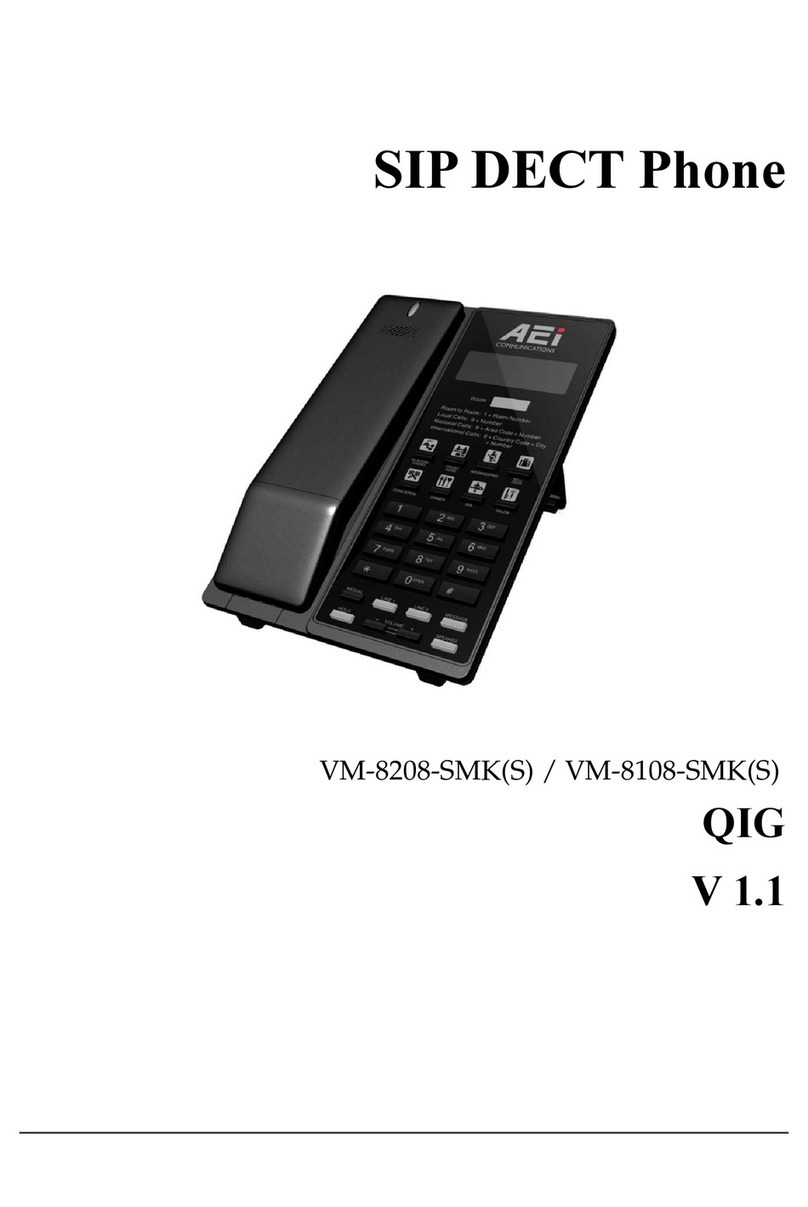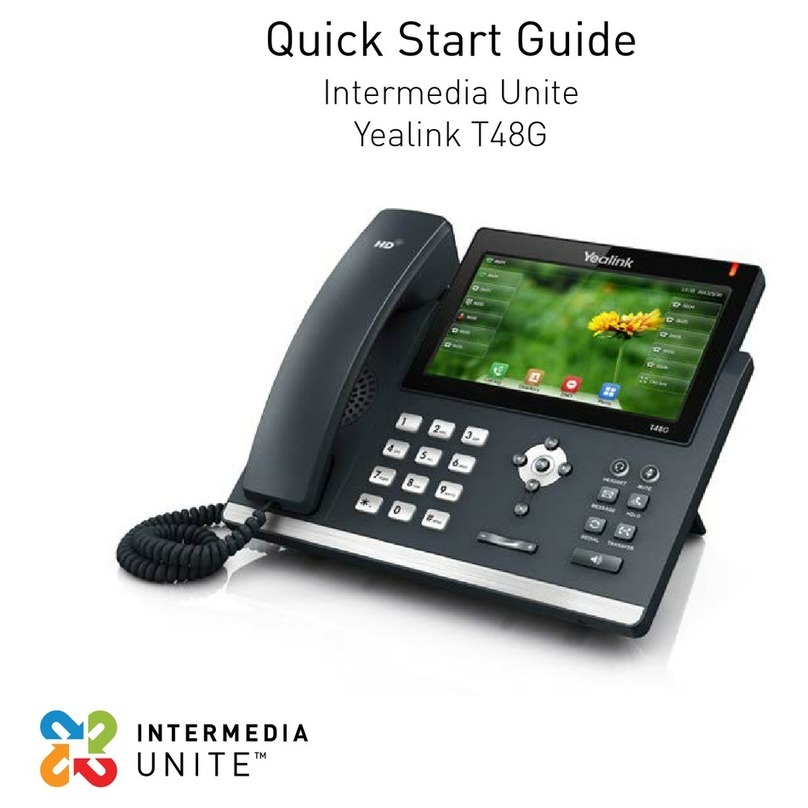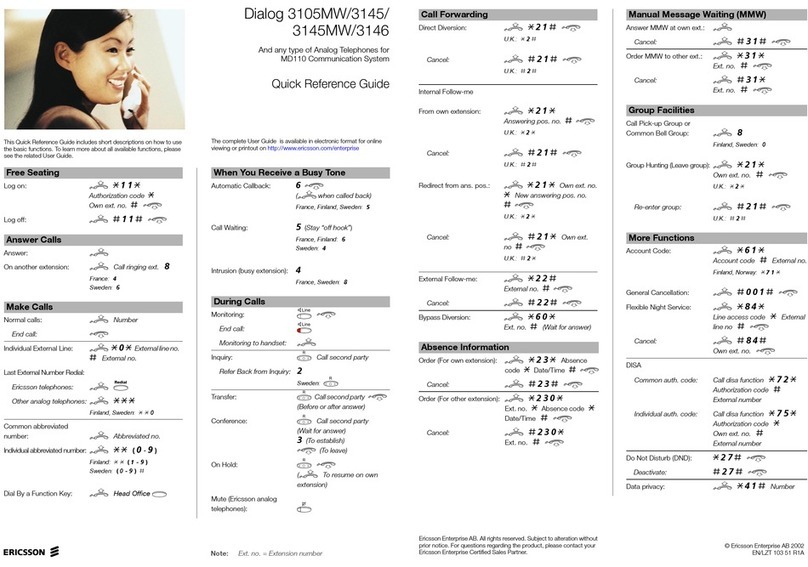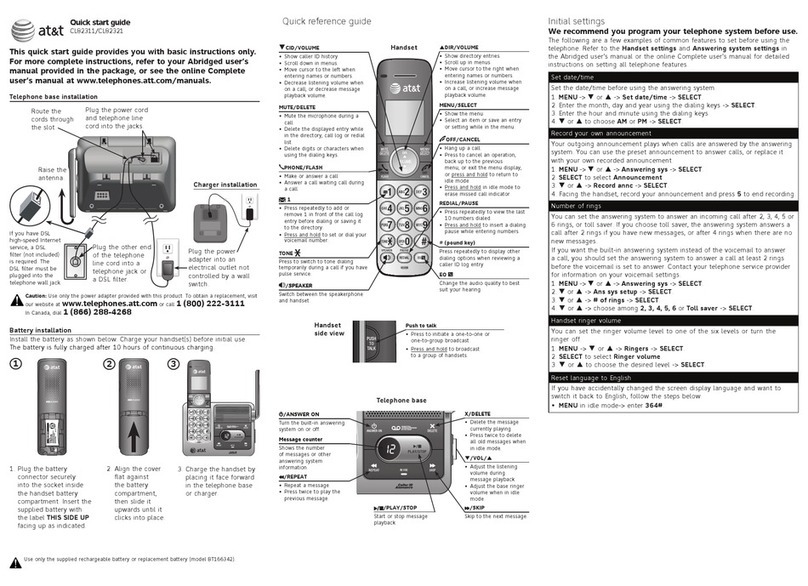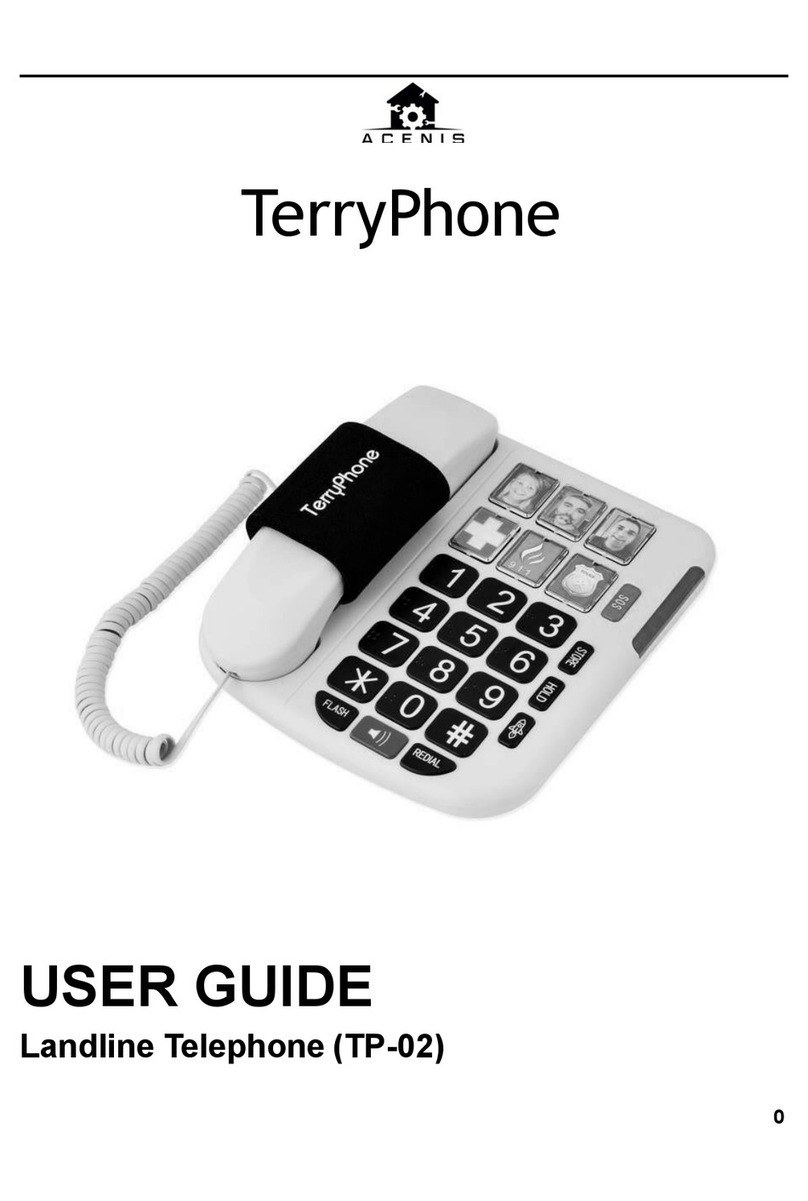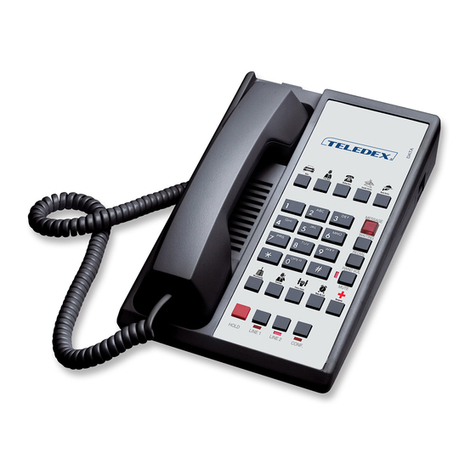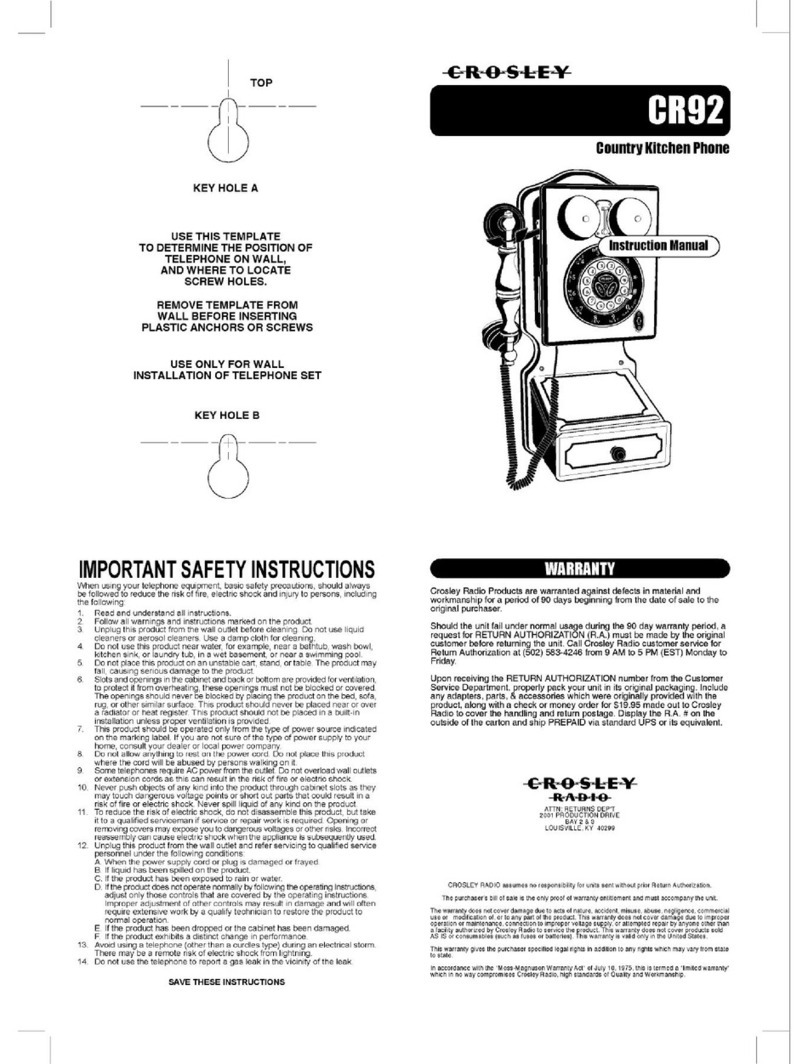Sagem RT1000-V2 User manual

SAGEM RT1000-V2
Fixed GSM Phone

SAGEM RT1000 User Manual
_________
2
User Manual
Reference : 251 872 337
March 23, 2005 Issue

SAGEM RT1000 User Manual
_________
3
© by SAGEM SA, 2005
All trade marks and product names are trade marks, registered trade marks or product names
of the respective title holders.
The contents of this manual and technical specifications can be changed without notice.
The description of specifications in this manual does not constitute a contract.

SAGEM RT1000 User Manual
_________
4
Safety Notes
!General: Please read this manual carefully before using the device. The
device is for indoor use only. Keep the device out of the reach of children, especially
infants. Do not expose the device to moisture, splashes, drips or spray. To avoid the risk
of demagnetisation please do not store diskettes, credit cards or similar objects in the
vicinity of the device.
Purpose: The sole purpose of the device is to make telephone calls through the GSM
radio networks. Use of this device for any other purpose is prohibited and can be
dangerous.
Installation: Do not switch on the device if any cable or the device itself is damaged.
Never use the device in areas where radio transmission is prohibited.
Health: The device contains a radio transmitter which may affect the operation of medical
electronic devices such as hearing aids or heart pacemakers. Your doctor and the
manufacturer of such devices can provide you with further advice.
SIM card: Please turn-off the device before you enter or remove the SIM card.
Power supply: Only use the manufacturer's original power supply units. Take care that
the Power Supply is always easily accessible. The voltage specified on the rating plate of
the power supply unit must match that of your mains supply. Disconnect the mains plugs
of all devices during thunderstorms.
Battery: The device is equipped with a rechargeable or non-rechargeable battery. The
battery only serves for short-term bridging of power failures. In case of changing the
battery being installed in the device please take notice of the following:
To exchange the rechargeable or non-rechargeable battery you need to remove the
battery cover. Before removing the battery cover, please make sure to unplug the charger
or plug-in power supply. After the installation of the battery, close the cover again in the
right position.
Caution! Danger of explosion during inappropriate replacement of the battery!
The battery must not be short-circuited. If the device is removed from service or during
works on it, all connections of the battery are to be disconnected.
When replacing the battery, do not dispose of it in the household refuse, but
dispose of it properly, in accordance with the local facilities and regulations.

!IMPORTANT USER INFORMATION
FCC Part 15 This equipment with the delivered antenna has been tested
and found to comply with the limits for a Class B digital device,
pursuant to Part 15 of the FCC Rules. These limits are
designed to provide reasonable protection against harmful
interference in a residential installation. This equipment
generates, uses and can radiate radio frequency energy and,
if not installed and used in accordance with the instructions,
may cause harmful interference to radio communications.
However, there is no guarantee that interference will not occur
in a particular installation. If this equipment does cause
harmful interference to radio or television reception, which can
be determined by turning the equipment off and on, the user is
encouraged to try to correct the interference by one or more of
the following measures:
–Reorient or relocate the receiving antenna.
–
Increase the separation between the equipment and
receiver.
–
Connect the equipment into an outlet on a circuit different
from that to which the receiver is connected.
Consult the dealer / installer or an experienced radio/TV
technician for help.
FCC part
15.19 This device complies with Part 15 of the FCC Rules. Operation
is subject to the following two conditions:
(1) this device may not cause harmful interference, and
(2) this device must accept any interference received,
including interference that may cause undesired
operation.
FCC part
15.21 Modifications not expressly approved by SAGEM could void
the user's authority to operate the equipment.
RF Exposure
mobile
Keep
distance !
Typically, the antenna connected to the transmitter is an omni-
directional antenna with max. 3dBi gain. Using this antenna
the total composite power in PCS mode is smaller than 1 watt
ERP.
The internal / external antennas used for this transmitter must
provide a separation
distance of at least 20 cm from all
persons
and must not be co-located or operating in
conjunction with any other antenna or transmitter."

SAGEM RT1000 User Manual
_________
6
Contents
1PREFACE 9
2TECHNICAL CHARACTERISTICS 10
3HOUSING 13
3.1 HOUSING VIEWS 13
3.2 KEYS DESCRIPTION 16
3.3 LEDS DESCRIPTION 18
3.4 SIM CARD SOCKET 18
3.5 POWER CONNECTOR AND SWITCH 18
4ICONS OF THE SCREEN20
5FIRST USE OF THE PHONE 22
5.1 CHECKING OF THE PACKAGE 22
5.2 INSTALLATION OF THE BATTERY 22
5.3 INSTALLATION OF THE SIM CARD 23
5.4 ANTENNA 23
5.5 POWER ON THE PHONE 23
5.6 POWER 24
6MAIN FUNCTIONS OF THE SAGEM RT1000 26
6.1 INITIALIZATION OF THE PHONE 26
6.2 OUTGOING CALLS 27
6.3 INCOMING CALLS 28
6.4 SWITCHING BETWEEN HANDSET MODE AND HAND-FREE MODE 28
6.5 END OF A CALL 28
6.6 ADJUST VOLUME 29
6.7 EMERGENCY SERVICE 29
6.8 INTERNATIONAL CALL 29
6.9 USE THE PHONE BOOK TO DIAL 29
6.10 SPEED DIAL 29
6.11 CALL HOLD, CALL WAITING, MULTI-PARTY CALL 29
7CONFIGURATION MENU 31
7.1 PHONE BOOK 31
7.1.1 Read Phonebook 32
7.1.2 Add Contact 32
7.1.3 Status 32
7.1.4 Speed dial 32

SAGEM RT1000 User Manual
_________
7
7.1.5 Delete all 33
7.1.6 Fixed numbers 33
7.2 MESSAGES (SMS) 33
7.2.1 Receiving a Message 33
7.2.2 Read Message 34
7.2.3 New Message 34
7.2.4 Service Center 35
7.2.5 Delete all 35
7.3 CALL HISTORY 35
7.3.1 Dialed 36
7.3.2 Missed 36
7.3.3 Received 36
7.3.4 Return 36
7.4 PHONE SETTINGS 36
7.4.1 Contrast 37
7.4.2 Ring Type 37
7.4.3 Volume 37
7.4.4 Set Time 37
7.4.5 Inter-digit Time 37
7.4.6 End Dialing by # 38
7.4.7 Hotline Number 38
7.4.8 Key tone 38
7.4.9 Security 38
7.4.10 Languages 39
7.4.11 Return 39
7.5 ALARM CLOCK 40
7.6 CALL SETTING 40
7.6.1 Call Forward 41
7.6.2 Call Barring 42
7.6.3 Call Waiting 43
7.6.4 Caller Identify 43
7.6.5 Return 44
7.7 STK (IF SUPPORTED BY THE SIM-CARD)44
8EDITING MODES 45
8.1 ENGLISH MODE 45
8.2 ABC MODE 46
8.3 123 MODE 46
8.4 SYMBOL INPUT MODE 46
9MAINTENANCE 47
9.1 BATTERY MAINTENANCE 47

SAGEM RT1000 User Manual
_________
8
9.2 TELEPHONE MAINTENANCE 48
10 TROUBLESHOOTING 49

SAGEM RT1000 User Manual
_________
9
1Preface
Welcome to use this fixed GSM phone, the SAGEM RT1000. In order to use it
correctly, please read carefully this manual.
This telephone provides similar services as a desktop telephone for PSTN (Public
Switched Telephone Network). But it doesn't need a telephone line: instead of being
connected to the PSTN, it provides access to a GSM network through a radio link.
It can be used everywhere so far there is a GSM coverage.
This telephone is delivered with a small external antenna. In areas far from the
GSM base station, this antenna can be replaced by a high gain antenna connected
to the SAGEM RT1000 by a coaxial cable. In the case of an outdoor antenna,
lightning protections shall be used and installed by professional staff according to
rule book.

SAGEM RT1000 User Manual
_________
10
2Technical characteristics
Frequency band
The SAGEM RT1000 can work in one or several of the following frequency
bands, depending on the version:
EGSM band: 900 MHz
DCS band: 1800 MHz
PCS band: 1900 MHz.
The 900/1800 MHz GSM functions are not operational in U.S. territories.
The FCC certification is only applicable for PCS 1900 MHz operations.
Screen
128*64 pixels, valid visible area 58 * 35 mm2
Back-light
LED back-light for LCD screen: green color.
Call modes
Two modes: hand-free or handset mode
Possibility to pass from hand-free mode to handset mode, and vice versa,
during a call.
Key23 keys

SAGEM RT1000 User Manual
_________
11
Battery
Depending on the model of SAGEM RT1000:
Non-Rechargeable:Alkaline: 4 x 1.5 Volt (AA-Type)
or
Rechargeable:Lithium cell: 1 x 3.7 Volt /1100 mA
You may use only the Lithium cell supplied with your RT1000 or an original
manufactured replacement part (Please ask your SAGEM RT1000 supplier).
Note: with one model of RT1000 you can use only one type of battery.
Battery work time
using Non-Rechargeable battery: Alkaline (AA-type)
In conversation mode: up to 4 hours
In idle mode: up to 40 hours
using Rechargeable battery: Lithium cell
In conversation mode: 2 to 4 hours
In idle mode: more than 18 hours
Charge time
using Rechargeable battery: Lithium cell
At normal conditions recharging of the battery takes about 4 hours.
Weight
RT1000: Roughly 770 grams (not including antenna and charger)
Charger: 60 grams
Physical Volume
about 210 mm (length) * 150 mm (width) * 85 mm (height)

SAGEM RT1000 User Manual
_________
12

SAGEM RT1000 User Manual
_________
13
3Housing
3.1 Housing views
Top view
Antenna
Knob for on hook state
Menu key
Handset
Up key
Down key
Power Indication Light
Network
signal Indication Light
LCD screen
Hotline key
Power key
Delete key
Return key
Hands-free key
Voice Mail key
Emergency key
OK key
Phonebook key
Redial key
Hands-free speaker
Loudspeaker

SAGEM RT1000 User Manual
_________
14
Backside view
Power Switch (only for battery)
Power Input
Antenna

SAGEM RT1000 User Manual
_________
15
Underside view
(model with non-rechargeable batteries)
External SIM Card Socket
Battery Box
Legs for wall mounted position

SAGEM RT1000 User Manual
_________
16
3.2 Keys description
Delete Key
Used:
-to delete the last digits during dialing
-to delete the last characters during editing a message, a name, a number
of the phonebook or a fixed dial contact
-to delete call records
-to delete a message
-to delete a phonebook and fixed dial contact
-to delete the last digits during edit pin or pin2 or puk or puk2
-to correct a mistake during access to the menu and submenus.
Before erasing a contact of the phonebook or SMS, confirmation by the user is
required.
Menu Key
To enter or exit menu mode.
Up Key
Used:
-to step upwards through a menu or submenu
-to increase the voice volume during a call
-to increase the LCD contrast.
Down Key
Used:
-to step downwards through a menu or submenu
-to decrease the voice volume during a call
-to decrease the LCD contrast.
Return Key
To return back to superior menu item.
Hotline Key

SAGEM RT1000 User Manual
_________
17
Hotline service: to call a predefined number (configured in the SAGEM
RT1000) by pressing only on this key.
Power Key
Used:
-to power off the device (press the key more than 3 seconds)
-to power on the device (press the key more than 3 seconds)
-to exit menu mode
0~9 , * , # Keys
Used:
-to dial a number
-to edit contents of the phone book
-to search acontact when you read the phone book
-to edit messages (SMS).
-to setup a GSM Emergency call by pressing the key 9more than 3
seconds
‘1’Key
To call the mailbox by pressing 3 seconds the “1” in hand-free and handset
mode.
This function is available only in some device versions.
Redial Key
To repeat the latest dialed number.
Phonebook Key
Used:
-toenter quickly the phonebook from idle mode
-to scan the phonebook and dial directly in hand-free mode and handset
mode

SAGEM RT1000 User Manual
_________
18
Ok Key
Used:
-to set up a call after dialing the called number
-to validate an operation
-as a flash key for some supplementary services.
Hand-free Key
Used:
-to answer anincoming call in hand-free mode (i.e. without the handset)
-to start an outgoing call in hand-free mode
-to end a call started in Hand-free mode
-to switch from handset mode to hand-free mode, and vice versa, during a
call started in handset mode.
3.3 LEDs description
Power Indication Light
When the power switch is on,if the battery isn’t discharged or the power
supply is connected,the red power indication light will be bright.
Signal Indication Light
If the radio signal received from the GSM network is correct, the signal
indication light flickers with a green color.
3.4 SIM card socket
The SIM card socket is located externally, on the underside of the SAGEM RT1000
phone.
There is a second SIM card socket, inside the SAGEM RT1000. Only the operator
shall use it, because access needs to open the phone.
3.5 Power connector and switch
Located at the back side of the phone:

SAGEM RT1000 User Manual
_________
19
Power connector
To connect the charger or plug-in power supply to the device.
Some versions of the device uses a Non-detachable power cable and no
connector.
Power Switch:
Connect or disconnect the device from the battery power source. If the device
is connected to mainspower (AC power input), your can turn ON/OFF it by the
“Power Key”.

SAGEM RT1000 User Manual
_________
20
4Icons of the screen
Icon Description
Battery Capacity Capacity of battery: the more the icon is dark, the more
the battery is charged.
Signal Strength The more bars are displayed, better is the received
signal.
Phone Book
This function supports reading, creating, editing and
deleting the phone numbers and names in the phonebook
of the SAGEM RT1000.
Call History
This function provides access to last recorded dialed,
missed and received calls.
Phone Setting This function offers the following settings of the phone:
contrast of the screen, ring tone type, time of the phone,
maximum inter-digit time, end of dialing by # key, hotline
phone number.
Alarm Clock
This function provides access to the alarm clock settings:
After setting the time of the alarm clock, the phone will
alarm you at that time.
Alarm Clock After setting the time of the alarm clock, the icon will
be displayed on the screen.
Call Setting This function is used to activate and deactivate the
following supplementary services: Call Forwarding, Call
Barring and Call Waiting.
Messages This function supports creating, editing, sending, reading,
and deleting of messages (SMS).
Table of contents
Other Sagem Telephone manuals
